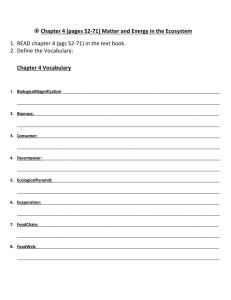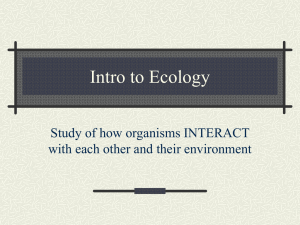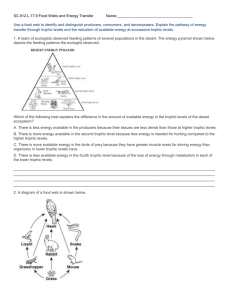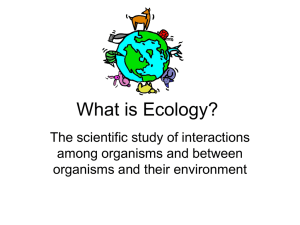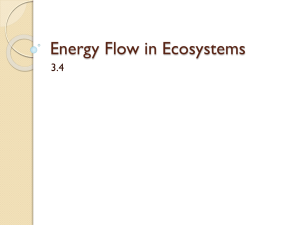EOC Escambia
advertisement
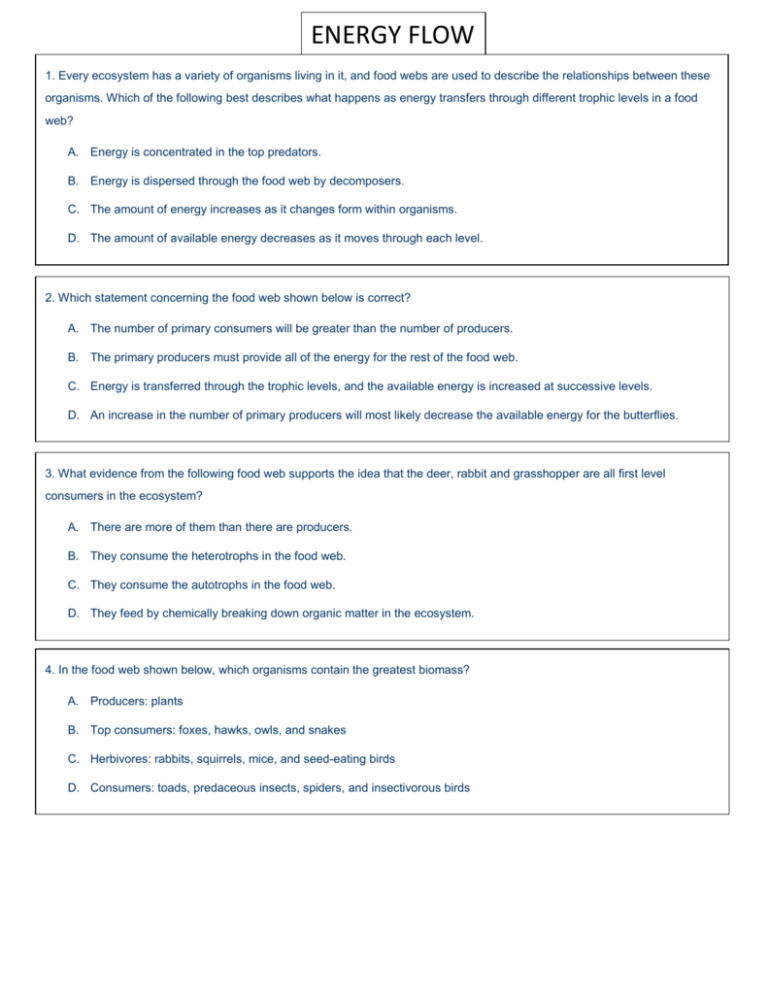
ENERGY FLOW 1. Every ecosystem has a variety of organisms living in it, and food webs are used to describe the relationships between these organisms. Which of the following best describes what happens as energy transfers through different trophic levels in a food web? A. Energy is concentrated in the top predators. B. Energy is dispersed through the food web by decomposers. C. The amount of energy increases as it changes form within organisms. D. The amount of available energy decreases as it moves through each level. 2. Which statement concerning the food web shown below is correct? A. The number of primary consumers will be greater than the number of producers. B. The primary producers must provide all of the energy for the rest of the food web. C. Energy is transferred through the trophic levels, and the available energy is increased at successive levels. D. An increase in the number of primary producers will most likely decrease the available energy for the butterflies. 3. What evidence from the following food web supports the idea that the deer, rabbit and grasshopper are all first level consumers in the ecosystem? A. There are more of them than there are producers. B. They consume the heterotrophs in the food web. C. They consume the autotrophs in the food web. D. They feed by chemically breaking down organic matter in the ecosystem. 4. In the food web shown below, which organisms contain the greatest biomass? A. Producers: plants B. Top consumers: foxes, hawks, owls, and snakes C. Herbivores: rabbits, squirrels, mice, and seed-eating birds D. Consumers: toads, predaceous insects, spiders, and insectivorous birds 5. An energy pyramid shows how the amount of energy changes at each trophic level in an ecosystem. What happens to about 10 percent of the energy represented in each trophic level? A. It is recycled by the ecosystem. B. It is converted to light energy. C. It is passed on to the trophic level above it. D. It is lost when passed to the next trophic level. 6. Which of the following best describes the primary role of decomposers in a food web? A. They limit the number of organisms within an ecosystem. B. They reduce the available energy in successive trophic levels. C. They recycle nutrients from dead organisms back into the system. D. They capture light energy and use it to power chemical reactions. 7. How do all consumers within a food web obtain their energy? A. by decomposing dead organic material B. by eating living, or once living, organisms C. from the Sun, directly through the process of photosynthesis D. from eating primary producers that are in the first trophic level 8. If 100 percent of the energy that is available at the first trophic level of a food pyramid goes through a five-step food chain, what percentage of that energy is available at the highest point of the energy pyramid? A. 0.01 percent B. 1 percent C. 10 percent D. 50 percent 9. A forest food web is shown in the picture below. How can producers be identified in this food web? A. Producers are any organism below the top consumers. B. Producers always have arrows pointing toward them, but no arrows coming from them. C. Producers are any organism on the food web, since they all undergo metabolic reactions. D. Producers are the autotrophs that make their own food and have no arrows pointing toward them. 10. Energy flows through the trophic levels of a food web. Which of the following statements regarding this flow of energy is true? A. Generally, only 10% of energy is transferred from one trophic level to the next. B. Energy is neither created nor destroyed; therefore, it is fully transferred to each trophic level. C. Ecological pyramids diagram the flow of energy with producers at the top and consumers at the bottom. D. Energy flows down from the top consumers to other carnivores, then herbivores, and finally down to the producers. 11. Energy within an ecosystem flows from the producers to the consumers. However, a very important group of heterotrophs are decomposers. What role do decomposers serve in an ecosystem? A. They break down organic matter into nutrients for other organisms. B. The make their own food and provide energy for the rest of the system. C. They consume the producers and provide energy for the higher consumers. D. They change electromagnetic energy from the Sun into usable energy forms.

